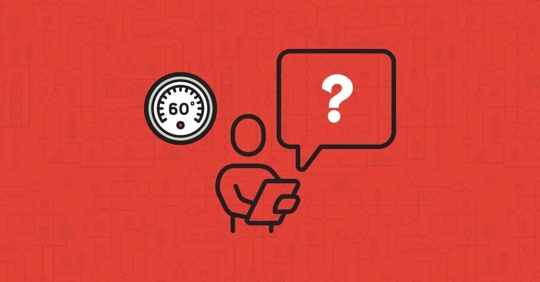When HVAC units fail to start, then your thermostat is the first place you should troubleshoot. The thermostat is the brain of your HVAC system, and checking or fixing it could get it sending the right signals to your furnace and air conditioner to work properly again.
Here are Four Steps on How to Troubleshoot a Thermostat
1. Reset the Thermostat
Sometimes a digital thermostat needs a reset to get its setting back to its original default resets are mostly needed after a power outage. This is because a sudden shut-off can prevent a digital thermostat from sending signals to your HVAC system properly when the power comes back on.
The method to reset your thermostat will differ depending on the model. Usual methods for resetting a thermostat include installing the battery backward for five seconds, then pushing a recessed reset button with a pen or paper clip, or shutting off the breaker to the thermostat for 30 seconds.
2. Clean Out Dust and Corrosion
In most cases, removing the cover and cleaning it out solve your problem. Some thermostats have a cover that can be removed while it’s mounted by unscrewing anchor screws on the side or bottom. Before removing the cover, make sure thermostats must be taken off from the wall.
Once you have checked the internal part of the thermostat, you can even use a vacuum hose to suck out dust and dirt. If dirt is caked on the coil inside the thermostat, use a soft brush or cloth to wipe it clean. You may also see corrosion on wires or terminals. You can eliminate this corrosion with an electronic contact cleaner.
3. Test the Power and Wiring
If the thermostat is clean but still not working, make sure to look for other sources of power interruption. Try replacing the battery if the thermostat is battery-operated. A dead battery is another reason to blame if the thermostat has a digital display that has gone blank.
If your thermostat is not battery-operated, twist the power wire together with the heat, cooling, and fan wires one at a time and listen to see if these components startup. If they do not then, the problem is likely with the wiring in your walls rather than the thermostat itself.
4. Adjust the Heat Anticipator
The heat anticipator’s main function is to set the desired room temperature and turn the furnace on or off when the room is nearing this temperature. If the heat anticipator is not synced properly, it can cause your furnace to short cycle or never reach the desired temperature.
After finding the cause, try to adjust the heat anticipator, by moving the calibration arm on top of the marked disc of the anticipator. Allow the furnace to run for two to three hours after adjusting, and repeat the process if necessary. If any of these steps don’t seem to work, then it is best to go for professional Gresham air conditioning repair or portland air conditioning repair.
Though troubleshooting can be done manually, professional help is what you need instead of taking risks. For AC repair in Beaverton or any other place, get in touch with Wolcott services. To resolve all of your heating and air conditioning needs, at (971) 253-7883.
The post Troubleshooting Your Thermostat: 4 Steps To Follow appeared first on Wolcott Services.

